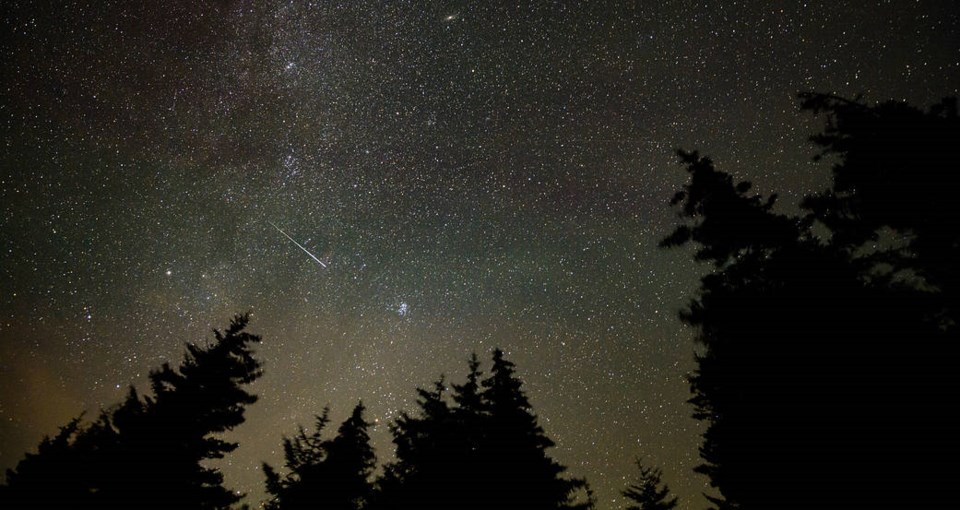One of the best and most anticipated meteor showers of the year will soon be lighting up the sky, and you may be able to take in the show just outside of Prince George.
Every year the earth moves through a trail of debris from a passing comet, and the result is the Perseids meteor shower, which takes place from mid-July to the end of August.
However, the meteor shower will peak between August 11 to 13 this year which means that will be the best time to see a meteor or what you may call a shooting star.
“But unfortunately, this year the Perseids won’t be as spectacular as last year in 2021, and the reason behind that is because we have a full moon coming up,” explained Malhar R. Kendurkar president of the Royal Astronomical Society of Canada Prince George Centre.
Kendurkar said during the Perseids there are 100 to 150 meteors per hour, however, because of the full moon, some of that light will block fainter meteors from view.
“But I’m hopeful because we are going to have lots of clear nights coming up. Every night has been clear so far, but tomorrow night and Friday night are going to be clear. Those two nights will be excellent.”
He added that Perseids is actually known for its fireballs, which are larger explosions of light and colour.
“Fireballs actually stay longer than an average meteor streak. So, an average meteor streak will stay like milliseconds or something but with Perseids you can actually see for one or two seconds sometimes. I have seen it for six seconds a couple of years ago.”
The meteors are visible because the Earth travels through the debris, ice and rocks, left behind from the passing Swift-Tuttle comet, which was first discovered in 1862 by amateur astronomers Lewis Swift and Horace Tuttle.
Kendurkar said the last time this comet passed close to the earth, where it could be seen by the naked eye, was in 1992, and the next pass by of this comet will be in 2126.
How to see the Perseids in Prince George
The best place to observe the Perseids meteor shower in Prince George is just outside of town, where it’s a little bit darker.
“The best place to see the meteor shower is, of course, to go out of town where there’s little to no light pollution, and you don’t really need binoculars or a telescope to see this meteor shower,” explained Kendurkar.
“The trick is to take in as much sky as possible and just allow 30 minutes for your eyes to adjust to the darkness because we are so used to seeing light and light pollution, but eyes actually need time to adjust to the dark sky.”
He said travelling anywhere between 25 to 35 or 50 kilometres away from the city should be a sufficient distance.
“The peak will actually start in the early hours of the morning because that’s when the Perseids constellation actually rises in the northern hemisphere.”
The Prince George Observatory won’t be open in time for the Perseids as it’s closed for August and will be open again to the public starting on September 2.
However, the Royal Astronomical Society of Canada Prince George Centre has a lot of great resources on its website to help space enthusiasts.
There are tips on light pollution abatement, meteor detection, aurora forecast, clear sky chart as well as a sky map and space weather forecast.



